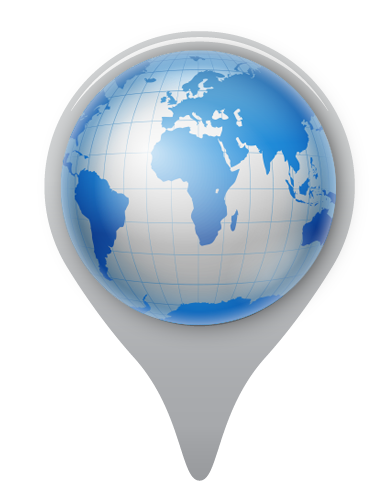
Marianne Levitsky, MES, CIH, ROH, FAIHA, and Mary O'Reilly, PhD, CIH, CPE, FAIHA, first met over the phone while planning a session for AIHA’s annual conference, AIHce. The two later met in person at AIHce 2010 in Denver, Colo., where they bonded over their mutual interest in improving occupational health worldwide, especially in developing countries. Levitsky went on to lead a new organization called Workplace Health Without Borders (WHWB), a volunteer-run nonprofit organization dedicated to preventing occupational disease around the world. She currently serves as secretary on the WHWB board of directors. O’Reilly serves as vice president of WHWB and as president emeritas of WHWB-US, an independent branch of WHWB that focuses on preventing occupational disease in underserved populations in the U.S. and raising awareness of the need for worker health.
Both WHWB and WHWB-US are spreading the word to help get personal protective equipment (PPE) and other needed occupational health supplies and equipment to Puerto Rico, which was recently devastated by Hurricane Maria. The WHWB-US Puerto Rico PPE fund was created to channel tax-free monetary donations to get supplies to Puerto Rico. WHWB-US will purchase needed supplies and coordinate shipments so that the right mix of requested supplies gets to the University of Puerto Rico School of Public Health as quickly as possible. Further information is available on the organizations’ websites,
www.whwb.org
and www.whwb-us.org
, as well as on AIHA.org
.
The Synergist: How are WHWB and WHWB-US related?
TS: What are some of the major occupational health issues in the developing world?
MO: We noticed problems with exposure to silica from different types of operations around the world, and that has become a focus for us. When I was in college, I worked in Mexico giving smallpox vaccinations. I remember going to an open mine and noticing that it was really dusty and that a lot of the people who worked there put handkerchiefs over their mouths to try to protect themselves. We worked with some of the Mexican doctors, and they said that most of the people there didn’t live to be very old because of their exposure to dust. At that time, I was not aware of industrial hygiene as a profession—much less the problems of occupational exposures—but I did understand the effect of silica on lungs. That is one of the things that has evolved into a focus for WHWB.
Many occupational health issues have their roots in social and economic conditions, and I think this is why it is so difficult to design effective workplace interventions and we have difficulty getting people involved with WHWB for the long haul. When you look at medical effects, like Doctors Without Borders, you can narrow the focus. But when you start looking at occupational health effects, very quickly you get into economic and social conditions, which are more difficult to address. It’s more difficult to formulate effective occupational health interventions because those interventions often depend very much on the social, economic, and cultural values that exist in the various countries.
It’s a much more complicated issue that WHWB is trying to address, and at times it can be frustrating. It really takes patience and perseverance to be able to tackle a problem like that.
ML: Mary’s right; there are two ways of looking at this question. We can talk about specific exposures—and obviously silica is a major one—and then we can talk about more systemic problems. In developed countries, we think of work as people going away someplace. They go out of their homes, they work somewhere, and then they come home. There’s a separation, except in some cases where workers are bringing toxic stuff home on their clothes, which is relatively rare. Usually what’s at work stays at work and you don’t have to worry so much about exposure of families and children.
But in the informal work force in developing countries, people may be working in their homes in cottage industries or they may be working in some other informal setting without childcare, so they’re bringing their children with them. We have many pictures of children in brick plants, for example. They’re not necessarily there because they’re working; they’re there because there’s no other childcare. They hang around with their parents and are exposed to many safety hazards as well as hazardous materials—certainly a lot of silica. That’s a very big issue in developing countries.
The general lack of expertise and resources for controls taps into the economic issues that Mary mentioned. One thing we’re dedicated to addressing is the lack of industrial hygiene knowledge and expertise, as well as resources for controls. It’s been a big eye-opener for us to try to go to places and think that we can apply the kind of control measures we’ve been taught to apply here, like local exhaust ventilation and respirators, which are very impractical in these situations. There’s the affordability of the material itself, and then there’s the power needed to run the control measures. Respirators are extremely impractical to wear in hot climates, not to mention expensive. In addition, beards are very traditional in many places, and we know that respirators don’t function well with a beard. We’ve learned that there are many barriers to instituting the kinds of controls that we have been taught, and it calls for a lot of imagination and creativity to develop new solutions.
One example from early on in our history is when we were approached by an organization in India. One of the things they wanted to do was set up a daycare center, and my gut reaction was, “Well, that’s very good, but we do occupational health—not education, not schools.” But as we worked more in India, we learned that a big problem is children being with their parents while they’re working and that daycare is in fact an industrial hygiene measure. It’s an administrative control to remove children from exposure. I’d never thought of it that way.

Editor's note: Exclusive to the digital
Synergist
, “Pole to Pole” focuses on the challenges of practicing industrial and occupational hygiene worldwide. This month, the series focuses on the efforts of Workplace Health Without Borders around the world.|
Pole to Pole:
Workplace Health Without Borders
|
An Interview with Marianne Levitsky and Mary O’Reilly
" One thing we’re dedicated to addressing is the lack of industrial hygiene knowledge and expertise, as well as resources for controls."
-Marianne Levitsky
TS: What have you learned while tackling occupational health issues around the world with WHWB?
MO: We need cultural humility, which is a term I heard from Rashid Njai, PhD, MPH, who is lieutenant commander in the U.S. Public Health Service Commissioned Corps and a health scientist at CDC’s Office of Noncommunicable Diseases, Injury and Environmental Health. His father is from Sierra Leone. He went there during the Ebola crisis, and he talks about how important it was for him to listen to the village elders and to talk with them. As an American, it was very strange for him to see how they approached the problems.
I think we need to keep that cultural humility when we go to these different cultures and make sure we respect how they view the world. As Marianne said, we can’t give them our solutions. We want to be able to have a conversation that perhaps will help them come up with their own solutions. That can be difficult, I think, when we come from a culture where we have rules and regulations that tell us what we have to do, and we’re used to going out and telling people what they have to do. I don’t think it works so well when working internationally.
ML: That’s true, and we certainly found that in India. We were trying to establish some local exhaust ventilation in cottage industries where they process agate jewelry. We had some hoods and things made locally, and when we brought them to the workplace, people would come up with ways of configuring it better. They had to configure it so it worked for them and didn’t interfere with their production. They were very good at participating in the design. Our driver turned out to be a fabulous local exhaust mechanic and came up with lots of good ways of doing things. There’s a lot of local expertise we can tap into, and I agree with Mary; we have to approach this with humility and leave some of our learning at home.
Another important thing to remember is to not let the perfect be the enemy of the good. We may not reduce levels of exposure to match the TLVs—and, of course, we would like to—but if we reduce exposure by 90 percent, it’s much better than it was.
TS: What WHWB achievements are you most proud of?
TS: What projects are ongoing or coming up for WHWB?
www.whwb.org
and www.whwb-us.org
, and join. You can also send us an email and we’ll put you on our distribution list, but we encourage you to join. There’s a membership form on the website that you can download, fill out, send in, and then you’re a member and you’ll get all the meeting notifications and other information.
As a volunteer-run organization, we also need money. One thing that has been somewhat successful is that we have members who have been able to connect us with organizations with charitable arms or with corporations that have charitable divisions or foundations. If you can help us approach your companies for donations, that would be great. If you’re associated with other foundations or are willing to write grants and applications, that would be great too. We’re ramping up our efforts, but we need more money to do what we want to do.
MO: The U.S. branch also has a form to fill out, and we ask our members to pay a minimal amount in dues, which goes toward the rent for our office and the insurance for our organization. Unfortunately, we don’t have a lot left over to put toward projects, so we’re looking to raise money to fund the work that we want to do as well.
The bar graph below depicts the number of people who die each year from occupational injuries and disease compared to other, more visible causes such as warfare and HIV/AIDS. This slide, courtesy of Marianne Levitsky, is included in many WHWB presentations.
Tap on the graph to open a larger version in your browser.

